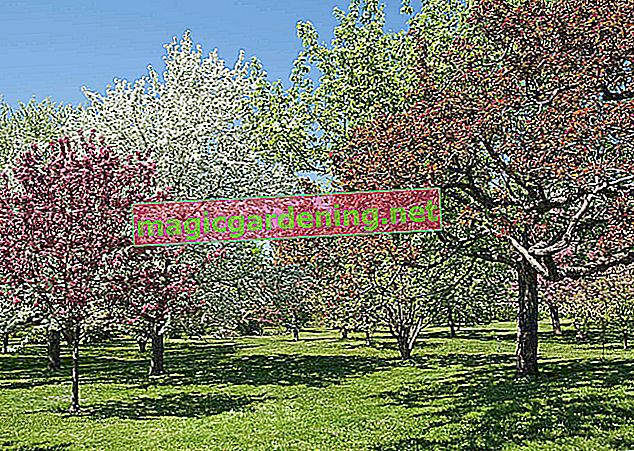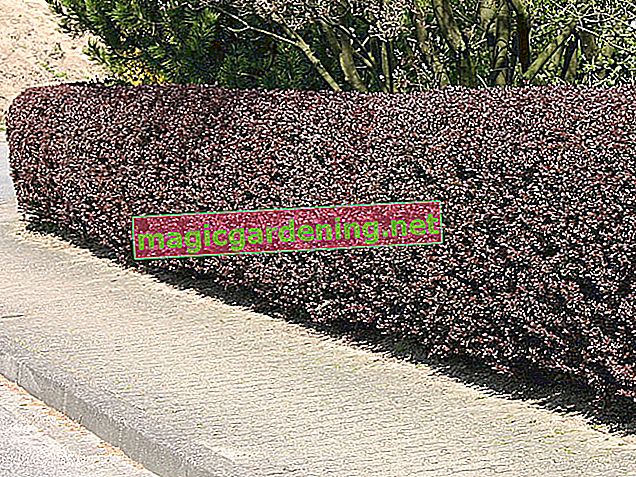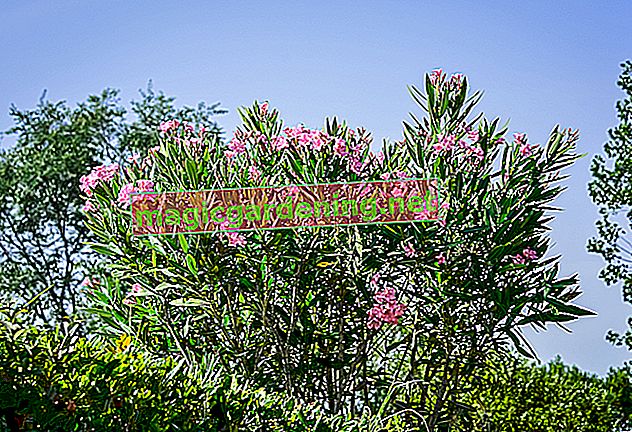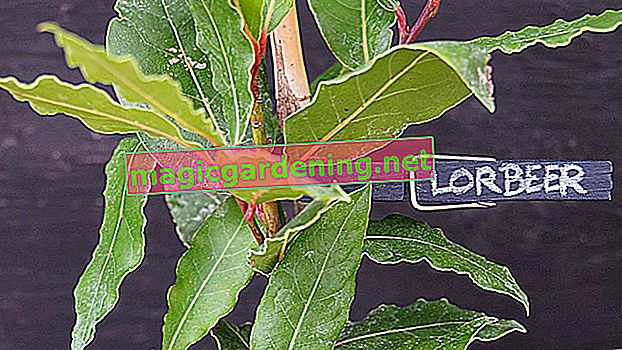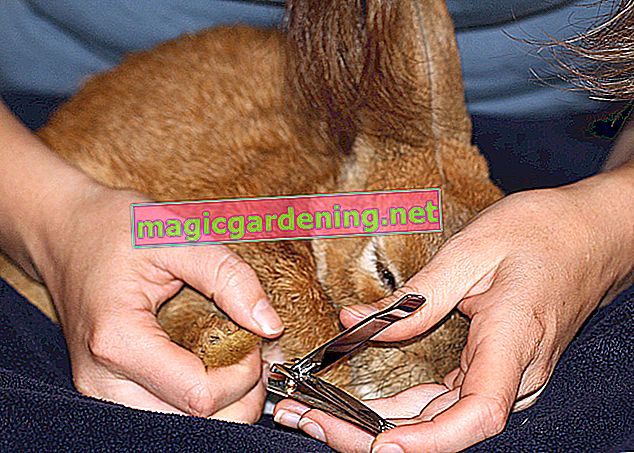
A ribbon full of flowers
A whole band of flowers is created in the garden when several hibiscus bushes are planted next to each other as a hedge. A hibiscus hedge is always the right choice when a seasonal privacy screen is sufficient. With its dense foliage and enchanting flowers in pink, blue and white, the hibiscus protects from prying eyes in summer.
also read
- Jerusalem artichoke - blooming privacy protection in the garden
- Blooming, green wall and decorative privacy screen - the crabapple hedge
- Planting tips for the garden hibiscus
In small gardens in particular, a flowering hedge makes perfect use of the available space. Whether as a border planting, privacy screen or framing various garden areas, a blooming hibiscus hedge ensures comfort and a holiday mood in the garden. When many flowers have already faded in midsummer, the magnificent hibiscus blossoms make a big entrance.
The right kind
The hardy garden hawk or rose hawk is used for a flowering hedge. Hibiscus syriacus, used. It is very easy to cut and after a few years reaches a height of 1.50 - 2m. The garden marshmallow is a summer bloomer and offers a reliable privacy screen in the summer months.
From the plant to the compact hedge
The plants have been selected and should now grow into a compact hedge. The following tips provide you with a good orientation for planting your hibiscus hedge.
The time of planting
The hibiscus hedge is planted in spring. Then the fresh shoots have enough time to develop before winter.
Location and soil
Like the specimen plant, an entire hibiscus hedge also needs a sunny, sheltered location. A permeable and nutrient-rich soil is favorable. A normal soil can be upgraded with humus-rich potting soil or compost.
Plant spacing
For a compact hedge you need two plants per meter. However, you don't have to be content with just one type or color. By planting different colored varieties, you get a varied play of colors.
Planting
For a straight hedge, mark the course of the planting with a taut cord. Either you dig out individual planting holes every 50cm or you draw a 50cm deep trench and water the planting areas well. Position the plants so that all the roots can spread out well and the root ball is completely covered with soil.
The loosely filled earth is slurried, then trampled on and poured again. Planting is easier if you get a helper.
Regular cut for a compact hedge
For a compact hedge shape, the hibiscus hedge needs to be pruned annually by about a third of its height. At the same time, frozen and dry twigs are removed and any interfering twigs on the inside are thinned out. Since the hibiscus is a summer bloomer, it is pruned in spring before new shoots.
When cutting the hedge, you should make sure that the hedge tapers upwards in a trapezoidal shape. In this way, enough light also comes to the lower parts of the plant and the hedge can develop more evenly.
Proper care
- water regularly, especially during dry periods
- possibly fertilize every two weeks with liquid fertilizer
- Bark mulch, brushwood or dry leaves as winter protection on the
Apply soil
- Aphids and other pests immediately
collect and fight
- Remove diseased leaves immediately so that the disease does not spread
spreads out the entire hedge
Special features of a free-growing hibiscus hedge
A hedge does not necessarily have to be trimmed and straight. If the garden offers enough space, a free-growing hedge can be created. In this form, the shoots are shortened and old and withered branches are removed. Several hibiscus bushes next to each other offer a real color spectacle. If the hibiscus is planted alternately with early flowering or evergreen shrubs, the hedge is a magnetic point of attraction all year round.
No trouble with the neighbors
If the hibiscus hedge is used as a border planting, a few things must be observed so that the neighbor does not bother the hedge. This includes compliance with a limit distance. Depending on the height of the hedge, the planting distance to the neighboring property must be maintained. There are also limits to the maximum height a hedge can grow.
Which distances and heights apply in detail, regulate the neighboring laws of the respective federal states. You can find out which specific provisions apply to your place of residence or your federal state from your local authority or city administration and from publications on the Internet. If you discuss this with your neighbors before planting, the hibiscus hedge is sure to bring joy on both sides.
Tips & Tricks
When cutting the hedge, a taut cord will help you find your way around. Use the cord to mark the upper limit and the thickness of the hedge above and below.

